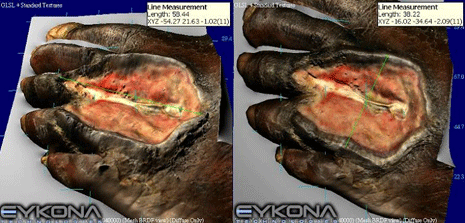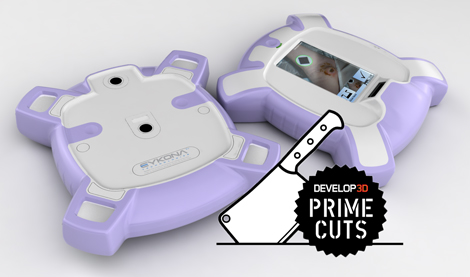
Healthcare providers in the developed world spend $40 billion per annum on wound management. That is huge and is set to rise.
Until now, the conventional approach to wound monitoring, which involves using photographs to assess how the wound is healing over time, has been manually intensive and difficult to quantify.
Having recognised that its imaging solutions could provide a breakthrough in this specialist field of wound care, Eykona Technologies approached electronic product designers Triteq to help them develop an entirely new 3D imaging system. The system would use a 3D camera and imaging software to record, layer and manipulate wound images.
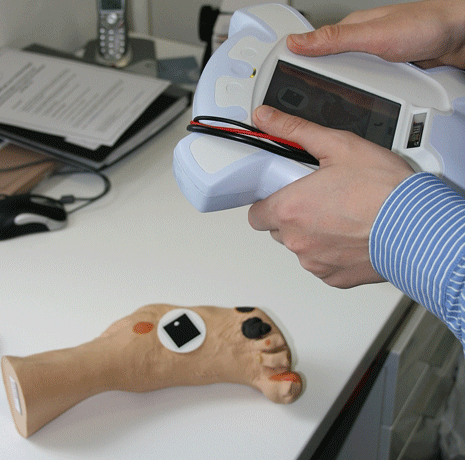
– The system would have three main components: a proprietary 3D camera, a PC software package, and a small optical target, which has to be placed next to the wound during image capture
– The 3D camera needed to be a hand-held unit in order for it to be easily deployed in routine clinical practice
– It also had to be designed for optimum cleanliness so consideration had to be given to the texture and robustness of the materials used
– Important parts to the development process included the mechanical design and housing. Sensors needed to be mounted in a rigid location within the device and lenses had to be held precisely, in relation to each other, to provide image stability
– This was achieved by keeping the enclosure aesthetics but by maintaining an internal mechanical platform
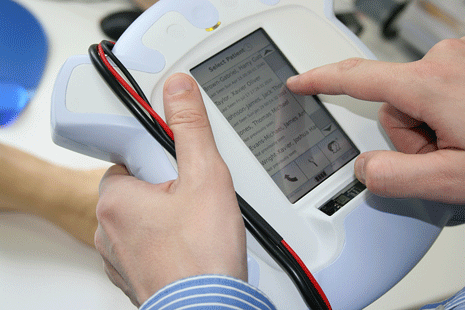
A user friendly touch screen interface and easy-to-clean casing design
– Another design consideration was shock resistance, to prevent the unit being damaged or the lenses being put out of alignment. External protection features on the enclosure solved this problem and the internal chassis was extended to provide additional shock protection
– Tools used during the design and development process included SolidWorks for the enclosure design, Altium for the circuit board design and Timesys LinusLink for the software development platform
– Initial prototype cases were a combination of SLA, hand machined components and bought in OEM parts. Circuit boards, optical assemblies and wiring were hand assembled in Triteq’s prototyping department
– Pre-production prototype systems comprising hardware and software are currently being used in clinical evaluations at key diabetic centres in the UK. Clinical evaluations in the US are imminent
– So far feedback has been favourable as it allows clinicians to see wound images that are entirely representative of the wound itself. They can manipulate those images and extract metrics to provide key indicators on healing, whilst quantifying size and tissue type within the wound bed. It also has interesting implications for remote/telehealth capabilities
– Eykona will be moving the product into commercial development in 2012
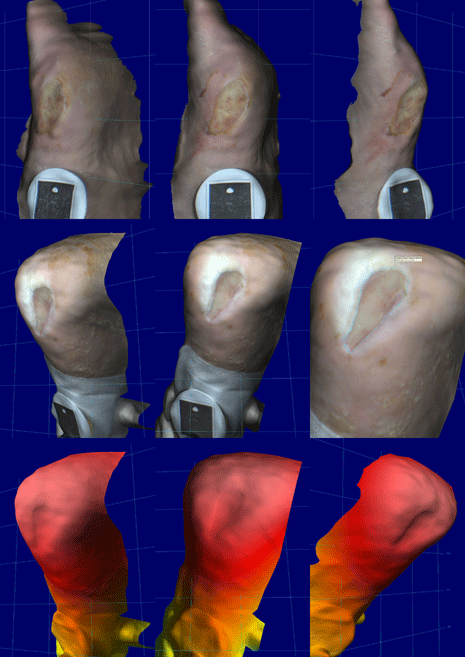
Screen captures of interactive 3D image illustrative of typical wound image quality
